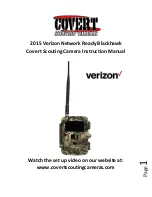
V1.02
Thom Hogan’s Complete Guide to the Nikon D300
Page 767
Q:
What’s the CPU that Nikon keeps referring to in lenses? Do
Nikon lenses really have a computer in them?
A: No, there’s not really a computer in Nikon lenses. There is
a small chip that provides two or three pieces of information
to the camera: the maximum aperture, the focal length, and
(on D-type and later lenses) a broad indication of the focus
distance currently set. (The focus distance is not exact, but
rather one chosen from a small set of possible distances.) Is it
really important to use D-type lenses on a D300? If you use
flash at close-in distances, yes. With a lens of less than
100mm in focal length and at focus distances of 15 feet (5m)
or less, you’ll see small, but usually visible differences in flash
exposures between non-D and D-type lenses in TTL flash
modes. With longer focal length lenses and longer focus
distances, flash exposures don’t vary much, if at all. In non-
flash exposures, you won’t see any dramatic differences in
exposures between non-D and D-type lenses at the same
focal length and focus distance, despite Nikon’s claims for
improved “3D matrix metering.” I have seen some small
differences, though, especially with really wide angle lenses
focused at close distances. What
does
make a difference for
both flash and non-flash use is the maximum aperture
information, which is required for the D300 to provide
Program and shutter-preferred exposure modes, as well as
matrix metering. But we can now enter that information
directly into the camera body, so the lens doesn’t actually
need
a CPU.
Q:
Is it safe to let the D300 and CompactFlash cards go
through airport X-ray machines?
A: Yes, though the camera should normally be turned OFF
before doing so. The danger is not the X-ray itself (as it is with
film), but that these devices tend to have strong magnetic
fields associated with them. But the brief exposure in any X-
ray machine, especially the relatively low-powered ones used
in the United States, shouldn’t have any impact on the camera
or the CompactFlash media. Likewise, your computer
equipment shouldn’t have problems with X-ray machines,
either.

































